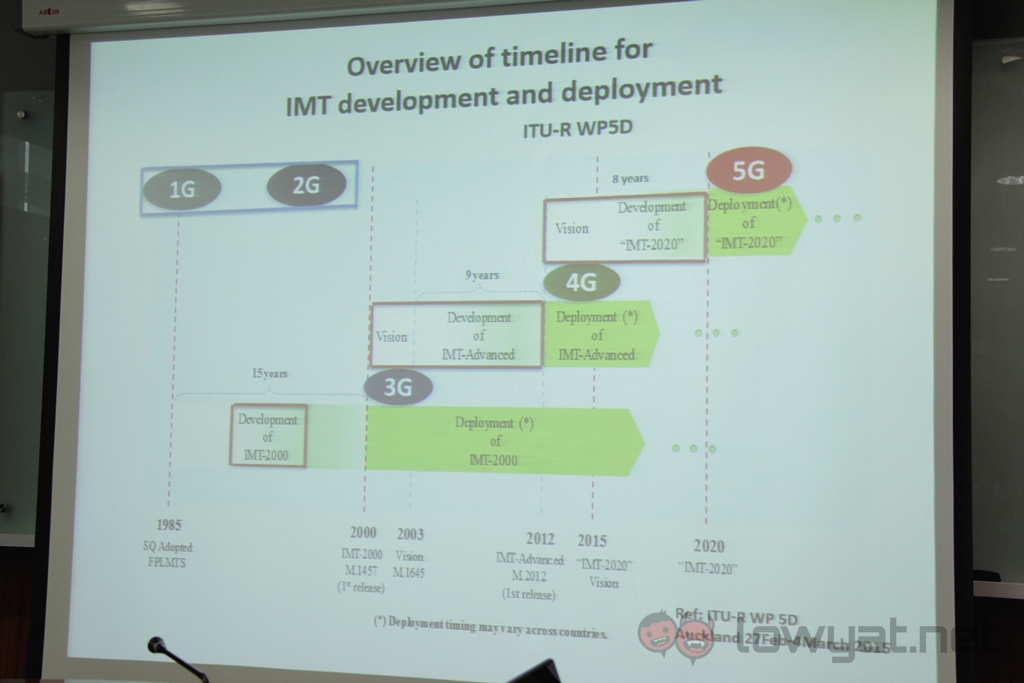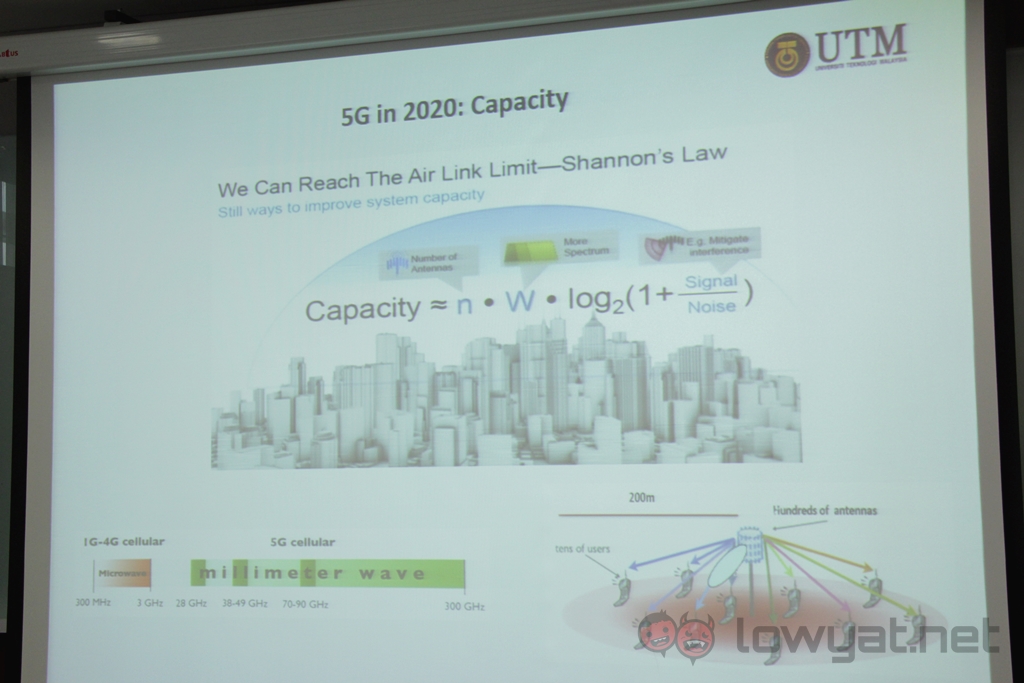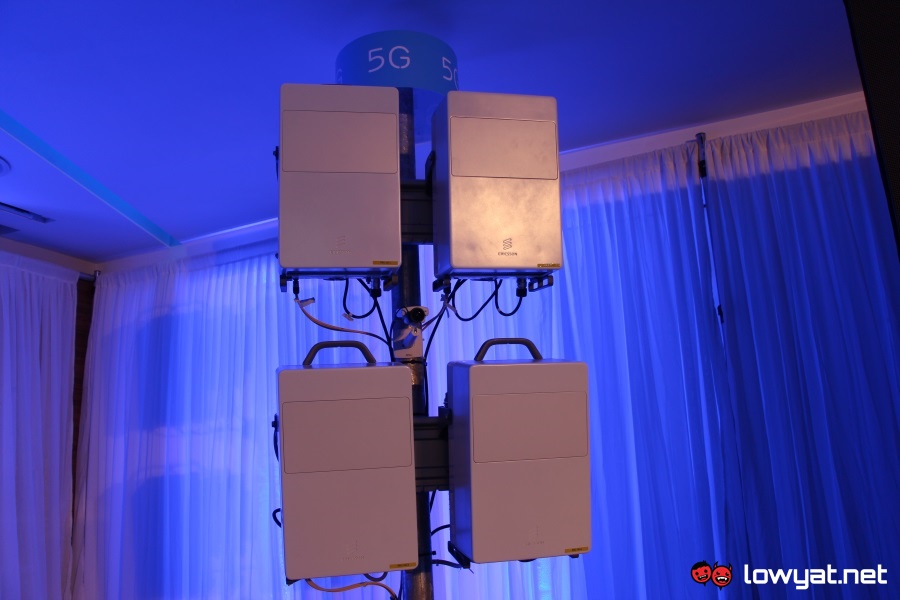The future implementation of 5G mobile broadband is designed to complement existing 4G connections; and not necessarily provide a replacement. This is due to experiments on having the standards run on much higher frequencies that anything else currently in use.
Professor Tharek Abd Rahman from University Teknologi Malaysia shared the vision of 5G communications during a white paper presentation at the university’s Kuala Lumpur campus. In it, he detailed that it should include download speeds of over 10Gbps and reduce latency to 1ms. This is in addition to being able to cater to over 25 billion connected devices in the year 2020.
However, the speed requirements may force the International Telecommunication Union Radio Communication (ITU-R) to set the acceptable bandwidth in the milimeter wave spectrum. This would essentially allow for incredible speeds in the 28GHz to 90GHz band.

However, this would come at the cost of range. Milimeter waves have a range of about 200m; preventing them from being useful over long distances. This limits the future applications of 5G technology to urban areas.
Professor Tharek believes that the most efficient deployment of 5G transmitters would be along roads; using existing lamp posts as towers. This is due to progressively smaller transmitters being designed, and would reduce the cost for telcos since the “towers” already have access to the power grid.

Telcos would still have to place additional 5G transponders inside buildings to boost the signal. High frequency waves are unlikely to do much good when trying to penetrate concrete.
Due to these limitations, 4G networks would have to be maintained to cover locations outside of urban areas. The comparatively tiny range of future 5G networks would make them unfeasible outside of cities; leaving rural areas to be serviced by 4G.
Of course, having 5G connections exist on milimeter waves would also allow them to exist without fighting for the increasingly limited bandwidth available for 4G connections.
That said, the final specifications for 5G communications will only be set in 2019. Although some countries have already begun testing the standard this year, which happens to also include Malaysia.
Follow us on Instagram, Facebook, Twitter or Telegram for more updates and breaking news.



